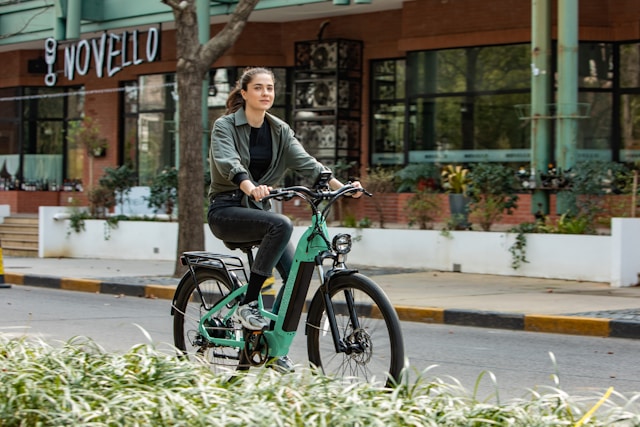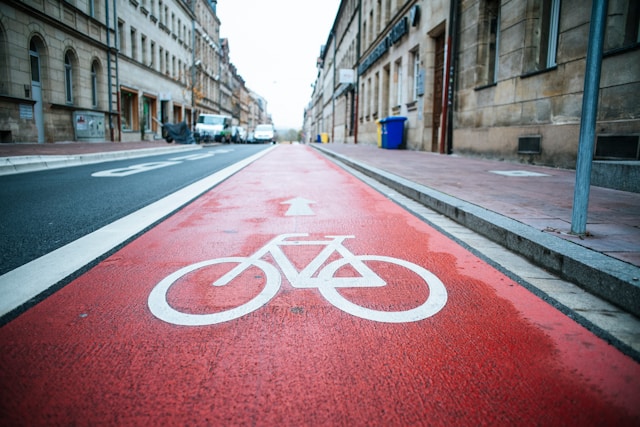Table of contents
As cities continue to grapple with traffic congestion, air pollution, and the growing need for sustainable transportation alternatives, electric bicycles have emerged as a transformative solution. Offering an efficient, low-impact alternative to traditional bikes and a healthier, more eco-conscious option than cars or motorbikes, e-bikes are at the heart of a mobility shift.
Statista projects that global unit sales in the electric bicycle market will reach 42.95 million bicycles this year. In Germany, in 2024, electric bike sales were higher than traditional bike sales for the first time. Electric bicycles made up 53% of all bikes sold.
With rapid advancements in technology and infrastructure, the e-bike revolution here- reshaping how we travel and shaping the future of sustainable, active mobility.
What Are E-Bikes?
E-bikes are bicycles equipped with an electric motor that assists the rider’s pedaling effort. They come in various styles—commuter, mountain, cargo, and folding—and typically offer pedal-assist or throttle-powered modes. Unlike conventional pedal cycles, electric ones make longer and hillier rides more accessible to a wider range of people.
Benefits of Electric Bikes

When weighing e-bike advantages and disadvantages, it’s true that their upfront cost remains relatively high compared to conventional bicycles, and they do require regular maintenance to keep them running smoothly. However, the wide-ranging benefits—for individuals, cities, and the planet—far outweigh these drawbacks.
With electric assistance, cycling becomes faster, less physically demanding, and more convenient. This is especially true for commuters looking to avoid traffic jams and the hunt for parking.
Here are some of the top advantages of electric bikes:
1. Ebike Mobility = Eco-Friendly Transportation
E-cycles have a significantly lower carbon footprint than cars or motorcyles. Both emissions during use and overall lifecycle emissions. They help reduce carbon footprints, air pollution, and urban noise levels—key elements in achieving more sustainable cities.
2. Traffic Decongestion
As more people choose pedelecs over cars for short to medium trips, cities experience less vehicular traffic. This shift not only reduces travel times but also alleviates the burden on public transportation systems.
3. Cost Savings
Owning and maintaining an electric two-wheelers is significantly more affordable than owning a car. No fuel costs exist, and routine maintenance is minimal. Many cities also offer incentives and rebates to encourage e-bike adoption.
4. Improved Health and Wellness
Though e-bikes offer electric assistance, they still require pedaling, encouraging physical activity. Studies show that users often ride longer and more frequently than traditional cyclists. This contributes to improved health and mental well-being.
5. Accessibility for All Ages and Abilities
Electric bicycles make cycling more inclusive. They enable older adults, people with physical limitations, and beginners to travel longer distances with less effort.
Public Electric Bike: A Global Trend

Recognizing the potential of urban electric bikes to reduce congestion and remissions, many cities are investing in public programs. Hangzhou, China, boasts one of the world’s largest bike-share systems, with over 116,000 public bikes and an average of 250,000 daily rentals.
With Biketown, the City of Portland, USA, has integrated electric bicycles as part of their transportation system. In Europe, cities like Paris are embracing the e-bike revolution through initiatives like the Vélib’ system—Europe’s largest bike-sharing program—where 40% of its 20,000 bikes are electric.
In cities, effective implementation hinges on understanding the demand and mobility patterns. Companies like Nextbike are leveraging tools such as PTV Visum to determine optimal station locations, fleet sizing, and seamless integration into existing public transit networks.
How Electric Bikes Are Reshaping Bike Traffic Patterns

The e-bike boom is not only changing how many people cycle—it’s also altering how, when, and where they ride. Increased usage and faster average speeds are prompting cities to rethink infrastructure design.
Urban planners are investing in:
- Wider, safer bike lanes
- Dedicated e-bike parking and charging stations
- Integration with public transport systems
Data-driven transport models play a critical role in planning. For instance, the city of Bordeaux, France, launched a comprehensive cycling data initiative. The aim was to enhance the representation of bicycle traffic in its transport model to expand and improve the cycling infrastructure. Special attention was paid to e-cycles.
As Bastien Guichardaz from PTV Group noted, “Given their growing adoption in urban areas, it was essential to integrate them into the model to reflect their distinct characteristics. The collected data confirmed that electric bicycles users exhibit different route choices and speeds compared to conventional cyclists, reinforcing the need for differentiated modeling approaches.”
Ebikes and Safety

Despite their many advantages, e-bikes also pose new safety challenges. As their popularity rises, so too do related accidents. In the U.S., injuries from electric bike accidents rose from 751 in 2017 to 23,493 in 2022. This information comes from a study by the University of California.
Several factors contribute:
- A sharp increase in riders, many new to cycling
- Higher average speeds and longer distances
- Infrastructure not yet adapted for e-cycle-specific needs
To reduce risks, cities should invest in safety campaigns, training programs, and better bike lanes for electric cycling.
E-Bikes and the Future of Sustainable Active Mobility
As cities aim for climate neutrality and improved quality of life, electric bikes are proving to be a vital piece of the puzzle. They empower individuals to adopt more active, environmentally conscious lifestyles while reducing urban transportation pressures.
Governments and city planners are increasingly supporting this transition through policy changes, subsidies, and education campaigns. The result? A cleaner, more efficient, and more human-centric urban landscape.

Bicycle Playbook
Download the Bicycle Playbook and find out what you can do to make your city more bicycle friendly.

Simulations Power Copenhagen’s Cycling Success
More than half of Copenhagen’s residents cycle daily. With PTV Vissim’s high-precision microscopic simulations, the city modeled its bicycle traffic—supporting smarter, data-driven infrastructure planning for a world-class cycling experience.



